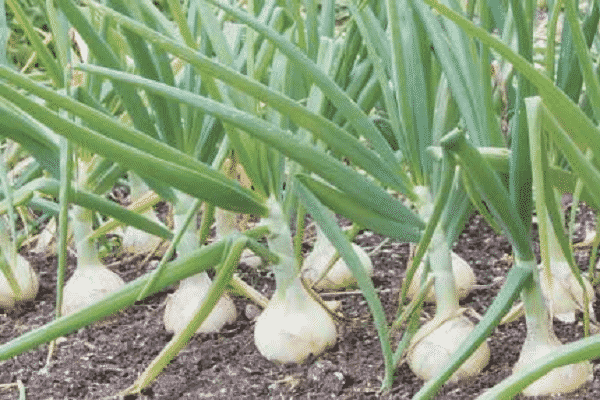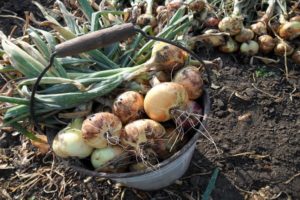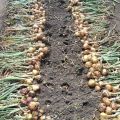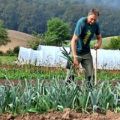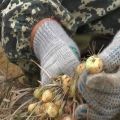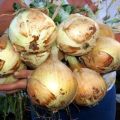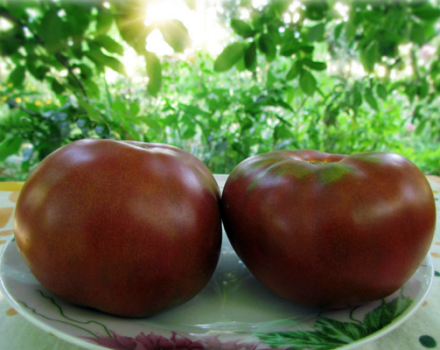Description of the Shetan onion variety, features of cultivation and care
When choosing a crop for growing, reviews from other gardeners play an important role for humans. If you want to plant onions on a plot of land, it is recommended to choose a variety based on the existing growing conditions. One of the onion varieties is Shetana. It can be grown in every vegetable garden. Due to its yield, good taste characteristics and preservation in winter, it is popular.
Origin history and characteristics
Shetan's bow originated in the Czech Republic. Breeders have tried to ensure that the culture develops in open field conditions. The survival rate is noticeable in the central and southern regions of various countries. It is recommended to plant a turnip for growing a turnip.
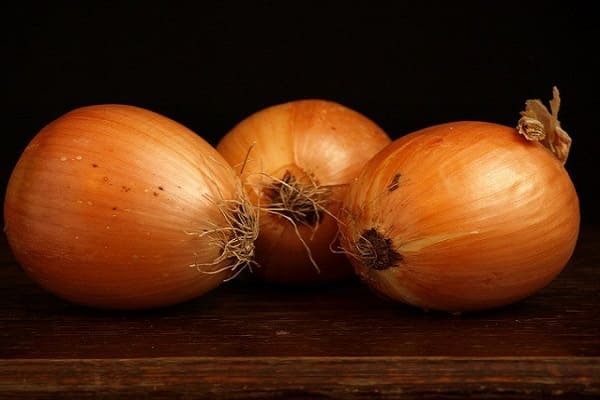
From the moment of planting a crop to harvesting, it takes from 100 to 105 days. Each onion is medium in size and dense in structure. In weight, one piece reaches almost 100 g. The fruit obtained from the seed weighs no more than 50 g. The taste of Shetana classifies it as a semi-sharp bulbous species.
The scales are light yellow in color. Rounded fruits are juicy and soft. The neck is of medium thickness. There are usually 3 buds inside the bulb.
The crop is stored without problems in rooms that are ventilated. At the same time, the onions do not germinate, which makes them suitable for growing in the next season. During the storage period, only 4–5% of the total amount of vegetables is eliminated. The crop safety is high.
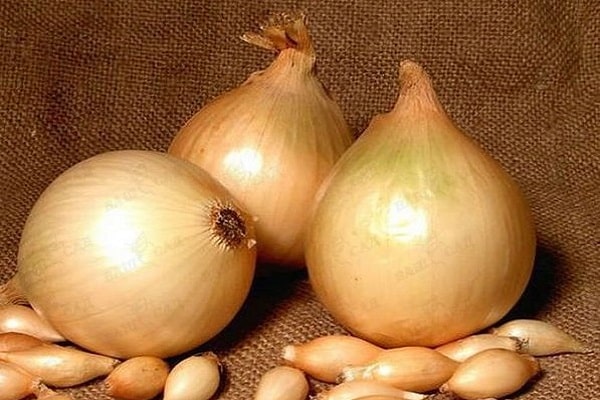
Features:
Shetan's characteristics are as follows:
- high level of productivity;
- fast maturation;
- long storage period;
- medium severity.
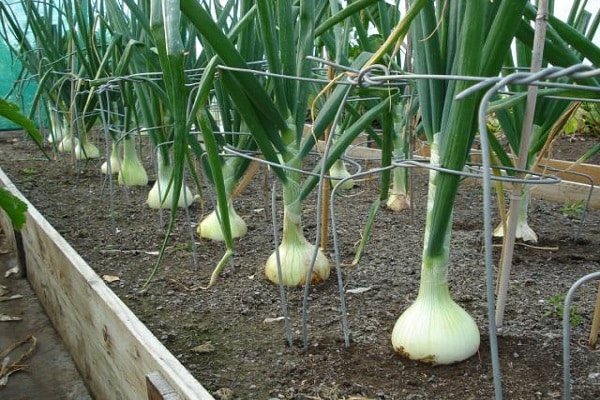
Shetana will appeal to discerning gourmets. Fruits are soft in taste, lacking strong pungency. The beautiful half of humanity prefers onions with such taste characteristics. This feature makes it so popular.
Shetan's bow needs a carefully selected soil. The predecessors are legumes and nightshades. A decrease in yield is observed after planting onions in places where garlic, cucumbers and asparagus grew. Favorable neighbors are bell peppers and carrots. Shetana is planted "before winter" or in early spring.
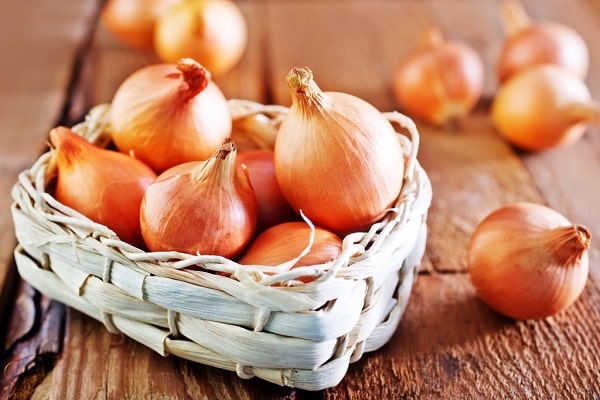
Selection of material
Before planting, material is selected that will ensure a rich harvest. For seeding, use medium-sized bulbs. They should not have traces of mechanical damage and rot. Smooth, identical onions are placed in a warm place. The seeds are soaked in warm liquid and then dried.
Landing in the ground takes place in mid-spring - April, and continues until early May. There should be enough space between the rows - 10 to 15 cm.To get a turnip, keep at least 6 cm of soil between the bulbs. This is necessary so that culture does not need free space.
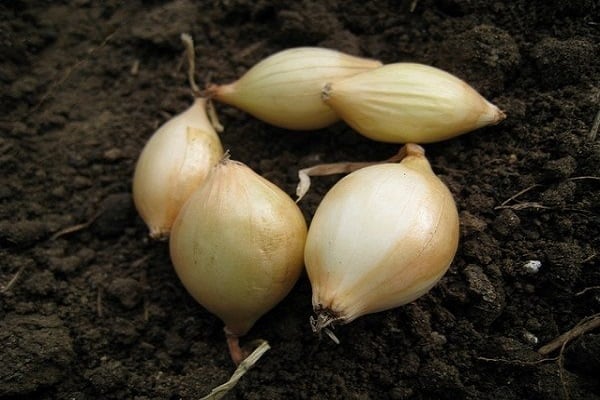
Humidity level
The variety does not need a lot of moisture. After planting, the plant is watered with water once a week. The irrigation pattern is maintained until early July. With regular precipitation, the culture does not need watering.

Tillage
Any activities with the soil begin after the plant has time to take root in the soil. For the best ripening of the bulbs, weeds are regularly removed between the rows. Pests take space for normal development and feed on nutrients from the soil that were intended for onions. The weeding procedure is carried out every week.
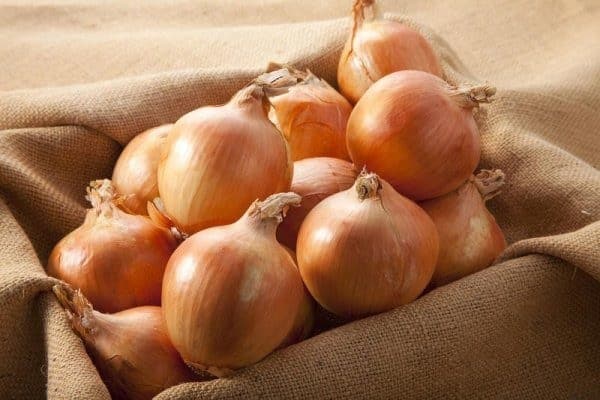
Fertilization
For normal growth and fruiting, the soil must be saturated with nutrients. Top dressing is done while digging up the beds, before planting the vegetable. Young shoots also need a new dose of fertilizer. For the entire period of growth, the culture is fed no more than 3 times. Nitrogen, potassium or phosphorus are chosen as fertilizers.
Ripe bulbs are dug up and placed in fresh air until completely dry. Then it can be transferred to the storage room.
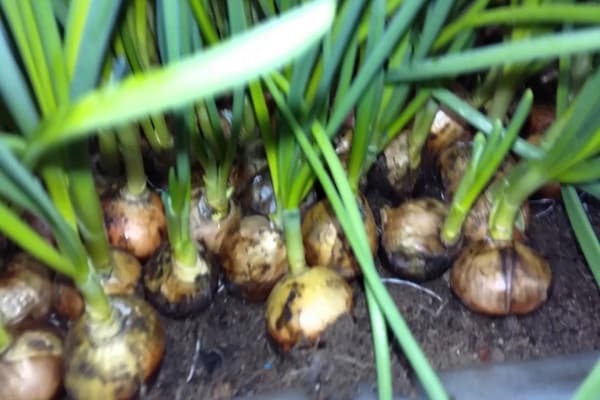
Yield
This indicator depends on the region in which the culture is growing. As a rule, up to 5 kg of vegetables are obtained in the central regions. In the southern parts of the country, yields are much higher. Depending on the correct care from 1 sq. m you can get 20 kg of bulbs.
If Shetana is grown from seeds, the bulb will weigh from 40 to 55 g. Sevok is able to give much better results - up to 85 g. Weight directly depends on care, soil fertility and temperature conditions. The vegetable is suitable for preparing any kind of food. Often used for blanks.
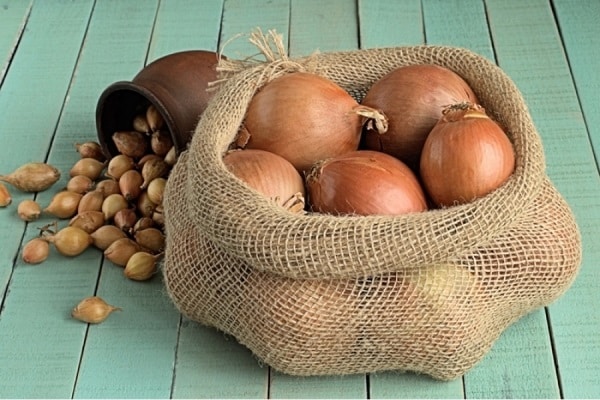
Pros and cons of culture
Shetan's bow has a number of positive qualities:
- Early ripening of the bulbs.
- Smooth and regular shape of all bulbs.
- Good yield.
- The safety of fruits until the next planting in the ground.
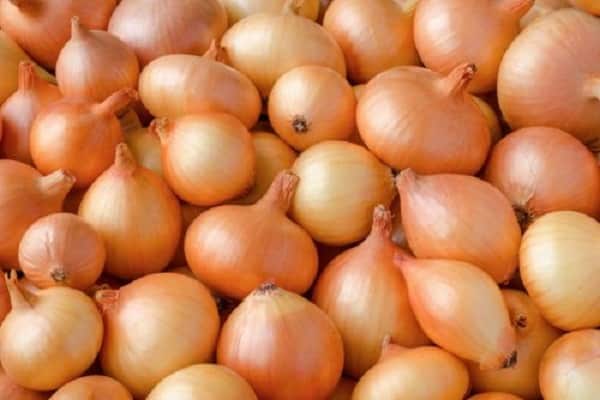
The description of Shetan's onion also has negative sides - the disadvantages of the variety. The vegetable reacts differently to the attack of onion diseases. Some he is able to survive without showing defeat by the pest. In other cases, the disease completely succumbs, which affects the harvest - it completely disappears. To exclude or reduce the likelihood of developing a disease, the vegetable undergoes prevention.
The Shetana variety has an excellent yield. Suitable for growing in all regions of the country. Doesn't require a person to have special skills to work with him. Needs land, weed management and storage space for harvested bulbs.
